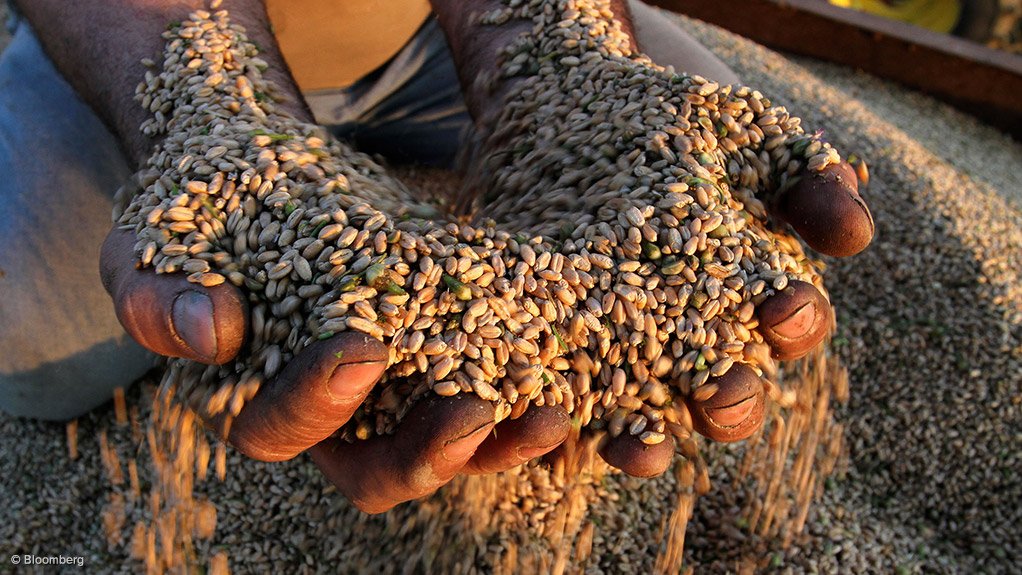The United Nations Conference on Trade and Development (Unctad) has assessed the potential impact of Russia’s invasion of Ukraine on trade and development globally, finding it will worsen the outlook for the world economy.
The negative impacts are underpinned by rising food, fuel and fertiliser prices.
Unctad reports that the world will experience heightened financial volatility, sustainable development divestment, complex global supply chain reconfigurations and mounting trade costs.
Secretary-general Rebeca Grynspan comments that the war in Ukraine has a huge cost in human suffering and is sending shocks through the world economy, threatening the gains made towards recovery from Covid-19 and blocking the path towards sustainable development.
Ukraine and Russia are global players in agri-food markets, representing 53% of global trade of sunflower oil and seeds and 27% of global trade of wheat.
This rapidly evolving situation is especially alarming for developing nations. As many as 26 African countries, including some least developed countries, import more than one-third of their wheat from the two countries. For 17 countries, the share is over half.
For example, the share of imports from Russia and Ukraine as a percentage of total imports of wheat, corn, barley, colza, sunflower oil and seeds is 26% for Turkey, 23% for China, 22% for Egypt and 13% for India.
“Soaring food and fuel prices will affect the most vulnerable in developing countries, putting pressure on the poorest households which spend the highest share of their income on food, resulting in hardship and hunger,” Grynspan points out.
According to Unctad’s calculations, on average, more than 5% of the poorest countries’ import basket is composed of the products that are likely to face a price hike owing to the war.
The share is below 1% for richer countries.
The risk of civil unrest, food shortages and inflation-induced recessions cannot be discounted, the report emphasises, particularly given the fragile state of the global economy and the developing world as a result of the Covid-19 pandemic.
Meanwhile, restrictive measures on airspace, contractor uncertainty and security concerns are complicating trade routes going through Russia and Ukraine, as the countries are a key geographical component of the Eurasian Land Bridge.
The disruption has already been felt across smaller tankers, which are key for the Black Sea and Baltic Sea regional oil trade. Black Sea–Med Aframax and Suezmax tanker earnings jumped from about $10 000 a day on February 18 to over $170 000 a day on February 25. The underlying freight costs increased by about 400%.
In 2021, 1.5-million containers of cargo were shipped by rail west from China to Europe. If the volumes currently going by container rail were added to the Asia-Europe ocean freight demand, this would mean a 5% to 8% increase in an already congested trade route.
“Owing to higher fuel costs, rerouting efforts and zero capacity in maritime logistics, the impact of the war in Ukraine can be expected to lead to even higher freight rates,” the report stresses.
Such increases would have a significant impact on economies and households.
In 2021, Unctad simulated that the freight rate increase during the pandemic raised global consumer prices by 1.5%, with particularly oversized effects in vulnerable economies such as small island developing States, landlocked developing States and least developed countries (LDCs).
CASE IN POINT
Unctad finds that wheat markets are a case in point of detrimental food availability and price impact.
In 2018 to 2020, Africa imported $3.7-billion in wheat from the Russian Federation and another $1.4-billion from Ukraine. Thirty-two per cent of total African wheat imports were from Russia in this period, while 12% were from Ukraine.
A look at specific African countries, including some LDCs, reveals a far higher degree of dependence for many on wheat imports from the Russian Federation and Ukraine than these overall percentages.
As many as 25 African countries, including many LDCs, import more than one-third of their wheat from the two countries and 15 of them import over half.
Notably, Benin and Somalia get all of their wheat from Russia and Ukraine.
Those countries highly reliant on wheat imports from Russia and Ukraine are mainly North African and East African economies, as well as a few countries already struggling with internal conflicts and precarious food security situations.
Further, there is limited scope to replace imports from the Russian Federation and Ukraine through intra-African trade, as the regional supply of wheat is comparatively small, and many parts of the continent lack efficient transport infrastructures and storage capacity.
In this context, and considering country-specific shocks, climate change, export restrictions and stockpiling, there might be a potential for food insecurity crises in some regions, especially if increased costs of fertiliser and other energy-intensive inputs negatively impact the next agricultural season.
A further rise in the cost of inputs is a significant risk factor in Africa, as the costs of urea and phosphate – two major components of fertiliser – had already risen by 30% and 4%, respectively, by the end of 2021.
EMAIL THIS ARTICLE SAVE THIS ARTICLE ARTICLE ENQUIRY
To subscribe email subscriptions@creamermedia.co.za or click here
To advertise email advertising@creamermedia.co.za or click here











